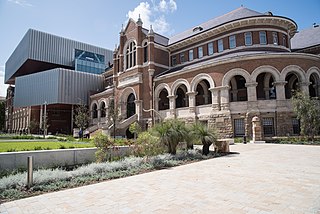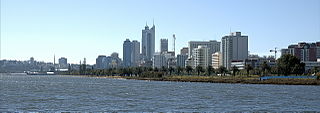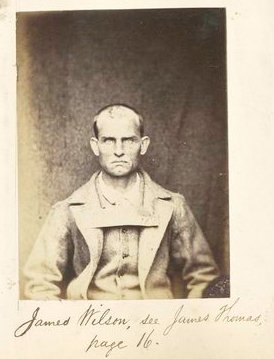Related Research Articles

Perth is the capital and largest city of the Australian state of Western Australia. It is the fourth most populous city in Australia and Oceania, with a population of 2.1 million living in Greater Perth in 2020. Perth is part of the South West Land Division of Western Australia, with most of the metropolitan area on the Swan Coastal Plain between the Indian Ocean and the Darling Scarp. The city has expanded outward from the original British settlements on the Swan River, upon which the city's central business district and port of Fremantle are situated. Perth is located on the traditional lands of the Whadjuk Noongar people, where Aboriginal Australians have lived for at least 45,000 years.

The Swan River is a river in the south west of Western Australia. The river runs through the metropolitan area of Perth, Western Australia's capital and largest city.

Fremantle is a port city in Western Australia, located at the mouth of the Swan River in the metropolitan area of Perth, the state capital. Fremantle Harbour serves as the port of Perth. The Western Australian vernacular diminutive for Fremantle is Freo.

Albany is a port city in the Great Southern region in the Australian state of Western Australia, 418 kilometres (260 mi) southeast of Perth, the state capital. The city centre is at the northern edge of Princess Royal Harbour, which is a part of King George Sound. The central business district is bounded by Mount Clarence to the east and Mount Melville to the west. The city is in the local government area of the City of Albany. While it is the oldest colonial, although not European, settlement in Western Australia - predating Perth and Fremantle by over two years - it was a semi-exclave of New South Wales for over four years until it was made part of the Swan River Colony.

The Noongar are Aboriginal Australian peoples who live in the south-west corner of Western Australia, from Geraldton on the west coast to Esperance on the south coast. There are 14 different Noongar groups: Amangu, Ballardong, Yued, Kaneang, Koreng, Mineng, Njakinjaki, Njunga, Pibelmen, Pindjarup, Wadandi, Whadjuk, Wiilman and Wudjari. The Noongar people refer to their land as Noongar boodja.
The Swan River Colony, also known as the Swan River Settlement, or just Swan River, was a British colony established in 1829 on the Swan River, in Western Australia. This initial settlement place on the Swan River was soon named Perth, and it became the capital city of Western Australia.

Yagan was an Aboriginal Australian warrior from the Noongar people. Yagan was pursued by the local authorities after he killed Erin Entwhistle, a servant of farmer Archibald Butler. It was an act of retaliation after Thomas Smedley, another of Butler's servants, shot at a group of Noongar people stealing potatoes and fowls, killing one of them. The government offered a bounty for Yagan's capture, dead or alive, and a young settler, William Keats, shot and killed him. He is considered a legendary figure by the Noongar.

Heirisson Island is an island in the Swan River in Western Australia at the eastern end of Perth Water, between the suburbs of East Perth and Victoria Park. It occupies an area of 285600 m2, and is connected to the two foreshores by The Causeway. The next upstream island is Kuljak Island, then Ron Courtney Island, with no islands in the Swan River downstream between Heirisson Island and the Indian Ocean other than the artificial islet in Elizabeth Quay.

Augusta is a town on the south-west coast of Western Australia, where the Blackwood River emerges into Flinders Bay. It is the nearest town to Cape Leeuwin, on the furthest southwest corner of the Australian continent. In the 2001 census it had a population of 1,091; by 2016 the population of the town was 1,109.

Kings Park, is a 399.9-hectare (988-acre) park overlooking Perth Water and the central business district of Perth, Western Australia.

Perth Water is a section of the Swan River on the southern edge of the central business district of Perth, Western Australia. It is between the Causeway to the east, and Narrows Bridge to the west – a large wide but shallow section of river, and the northern edge of the suburb South Perth. It is considered a landmark of the City of Perth.

Beeliar is a suburb of Perth, Western Australia, located within the City of Cockburn. The name refers to the Beeliar people, a group of Aboriginal Australians who had land rights over the southern half of Perth's metropolitan area. The suburb contains the Thomsons Lake Nature Reserve.

The convict era of Western Australia was the period during which Western Australia was a penal colony of the British Empire. Although it received small numbers of juvenile offenders from 1842, it was not formally constituted as a penal colony until 1849. Between 1850 and 1868, 9,721 convicts were transported to Western Australia on 43 convict ship voyages. Transportation ceased in 1868, but it was many years until the colony ceased to have any convicts in its care.

The Western Derby is the name given to the Australian rules football match between the West Coast Eagles and the Fremantle Dockers, who both participate in the Australian Football League (AFL). As both teams are based in Perth, the capital city of Western Australia, the term "derby" is used to describe the match. It has become one of the most important matches for football in Western Australia, with former South Fremantle and West Coast player, and former West Coast coach John Worsfold claiming that in the week before a derby that it is the main topic in Perth.
It's obviously different to the build-up of any normal game... We don't care what else is happening in the country, which is great."

WAY 79, also referred to as WAY '79 and WAY 1979, was the official 1979 sesquicentennial celebration of the European colonisation of Western Australia.

Whadjuk, alternatively Witjari, are Noongar people of the Western Australian region of the Perth bioregion of the Swan Coastal Plain.
Perth is the capital city of Western Australia. It was established by Britain as the Swan River Colony in 1829. The area had been explored by Europeans as early as 1697, and occupied by the Indigenous Whadjuk Noongar people for millennia.

The Pinjarra massacre, also known as the Battle of Pinjarra, occurred on 28 October 1834 in Pinjarra, Western Australia when a group of Binjareb Noongar people were attacked by a detachment of 25 soldiers, police, and settlers led by Governor James Stirling. According to Stirling, "about 60 or 70" of the Binjareb people were present at the camp and John Roe, who also participated, estimated about 70–80. This roughly agrees with an estimate of 70 by an unidentified eyewitness. The attack at Pinjarra was in response to sustained aggression by the Binjarebs, including robberies and murder of settlers and members of other Nyungar tribes.

East Fremantle is a suburb of Perth, Western Australia, located 13 kilometres (8.1 mi) south-west of the central business district. The suburb is mainly residential, and is coterminous with the Town of East Fremantle local government area.

Riverside Drive in Perth, Western Australia, is a road on the northern side of Perth Water. It was built on reclaimed land in the 1930s, and links The Causeway to the Narrows Bridge.
References
- ↑ Western Australia. 175th Anniversary Secretariat (2004), Foundation Day 2004, 175th Anniversary Secretariat, retrieved 11 December 2016
- ↑ 175th Anniversary State Conference (2004 : Perth, W.A.); Western Australia. 175th Anniversary Secretariat (2004), Western Australian twenty twenty-nine : a shared journey, 175th Anniversary Secretariat, retrieved 11 December 2016
- ↑ 175th Anniversary web page on the Pandora NLA website
- ↑ Western Australia (1980), 175th anniversary of the founding of the Swan River Colony, Govt. of Western Australia, retrieved 11 December 2016
- ↑ Stasiuk, Glen; Sillifant, Ash; Collard, Len; Kulbardi Productions; Murdoch University. Kulbardi Aboriginal Centre; South West Aboriginal Land & Sea Council (2005), Noongar of the Beeliar (Swan River), Kulbardi Productions, retrieved 11 December 2016
- ↑ Gentile, Andrew (2004), The Swan River : images from Guildford into the upper reaches, Andrew Gentile, ISBN 978-0-9581432-1-9
- ↑ Statham-Drew, Pamela; Statham-Drew, Pamela, 1944-. James Stirling; Pandorus Publications (2004), James Stirling and the birth of the Swan River Colony, Pandorus, ISBN 978-0-646-43795-8
{{citation}}: CS1 maint: multiple names: authors list (link) - ↑ 175th anniversary of the founding of the Swan River colony, Constitutional Centre, 2004, retrieved 11 December 2016
- ↑ Western Australian Genealogical Society; Western Australian Genealogical Society. Swan River Pioneers 1829-1838 Special Interest Group (2005), First families of the Swan River Colony : a brief biographical description of persons arriving into or born in the Swan River Colony up to 31st December 1838, Western Australian Genealogical Society, ISBN 978-1-876815-20-2
- ↑ West Australian Quilters' Association (2004), Women's work : the first exhibition of Western Australia's quilt heritage in celebration of the state of Western Australia's 175th anniversary, West Australian Quilters' Association, ISBN 978-0-9579590-2-6
- ↑ Wellington, Angela; West Australian Newspapers (2004), 175th anniversary souvenir : WA's defining moments, West Australian Newspapers, retrieved 11 December 2016
- ↑ "About 175th Anniversary". The Constitutional Centre of Western Australia. Department of the Premier and Cabinet. Archived from the original on 15 March 2019.
- ↑ "Western Australian Heritage Icons 2004". The Constitutional Centre of Western Australia. Department of the Premier and Cabinet. Archived from the original on 15 March 2019. Retrieved 11 December 2016.